Gymnocalycium: varieties and subtleties of care
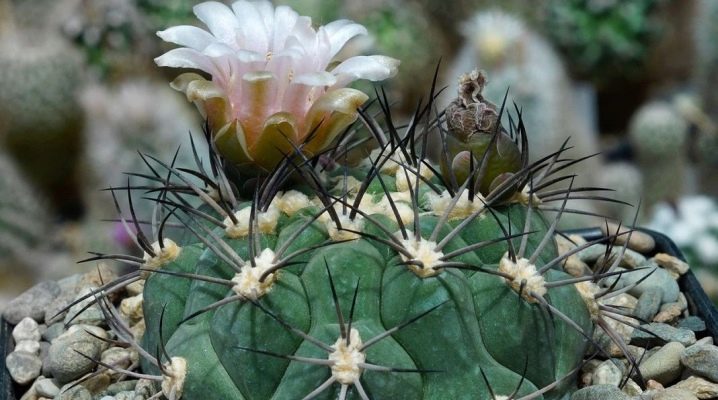
There are several thousand species of cacti in the world, the most popular are hymnocalycium. These plants come from South America. They look original and aesthetically pleasing and require a minimum of maintenance.
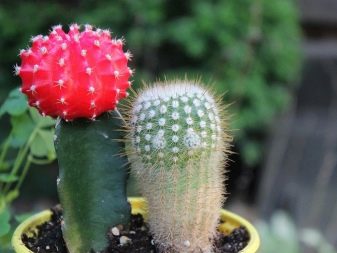
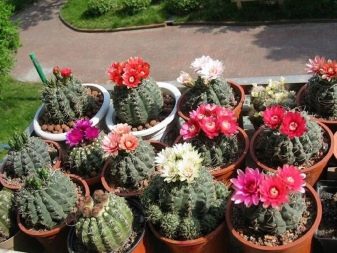
Peculiarities
The Gymnocalium cactus (Latin Gymnocalium) has about eight dozen species, many of which are found all over the world. Naturally, cacti grow in the tropics, in countries such as Paraguay, Chile and Peru. The plant loves an atmosphere with a high moisture content and temperatures above +20 degrees. These cacti are found in the mountains above sea level up to 1000 meters. Gymnocalycium cactus was discovered in the 19th century by the naturalist Ludwig Pfeiffer (1844). In the XX century, the hymnocalycium was differentiated into 5 sections according to the characteristics and properties of the seed fund.
After two years of life, cacti bloom from April to October. The flowers appear at the top and look like small bells up to 7.5 cm in diameter. The appearance is spectacular, while the color scheme can be very different - yellowish red, beige, dark purple and so on. The maximum parameters of the plant are about 1/3 meter, the stems are spherical. The flowers themselves do not show any thorns or hard villi.
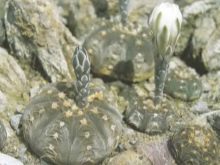
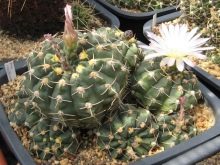
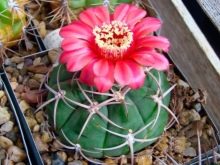
Types and names
There are many varieties of cacti. It is worth considering the most popular types in more detail.
- Gymnocalycium nude has the shape of a stem that resembles a slightly flattened sphere. The plant has wide ribs, bright green color, slightly concave spines up to 2 centimeters in size. The flower is presented in beige or white color scheme.
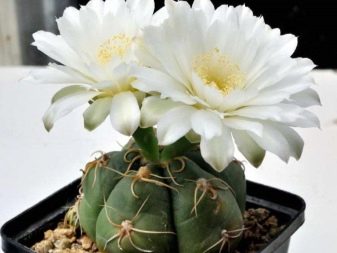
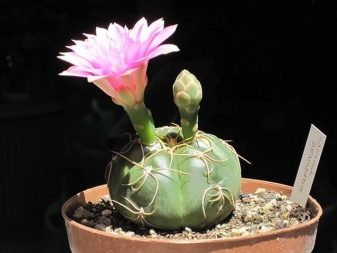
- Gymnocalycium saglionis also has dark green spherical stems. The size of the cross-section is up to 35 cm. The size of the thorns is up to 4.5 cm (they are strongly curved). Flowers in white or pink color look beautiful.
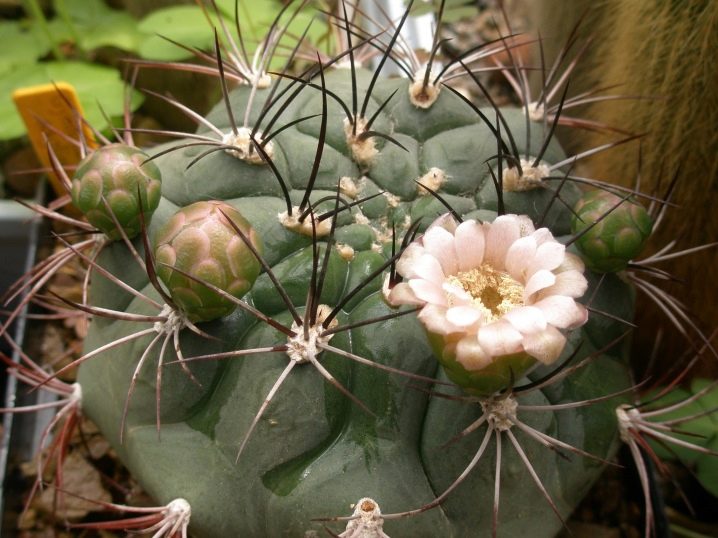
- Gymnocalium humpback has a stem, long spines (4 cm), flowers of various cream shades. The plant got its name from the presence of a spherical succulent. The central thorn of the plant grows over time with radial thorns that resemble thickenings. A cactus can reach 55 cm, have a stem diameter of up to 20 centimeters. There are up to two dozen ribs, they look relief, look like separate segments. The plant blooms beautifully, the flowers are large (up to 7 cm in diameter), located on a wide tube. Petals of white color with a reddish base.
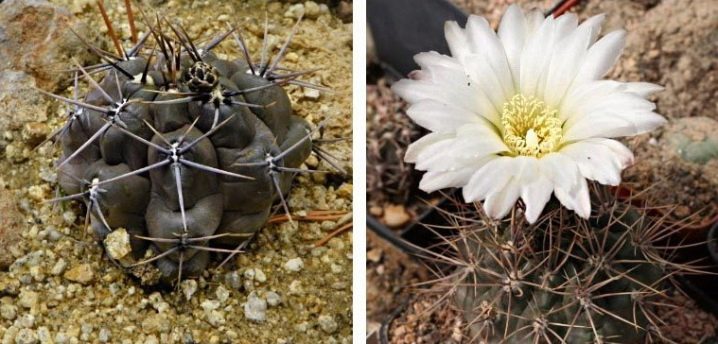
- Gymnocalycium tiny grows to only 3.5 cm. The stem is similar to a ball, the color is dark green with a brownish tint. There are no thorns on the cactus. It blooms with large white flowers.
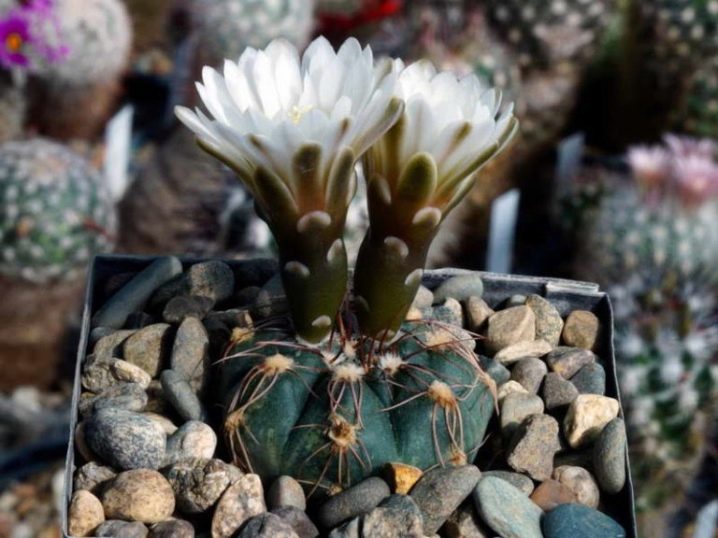
- The cactus Andre is remarkable. It has an original color that does not at all make it related to the cactus family, nevertheless, Andre is a real hymnocalycium. The bushes of the plant have a large number of "heads" of a catchy bright yellow color scheme. The stem of the cactus is also yellow, with sparse thorns sprouting on it, which are in close contact with the stem.
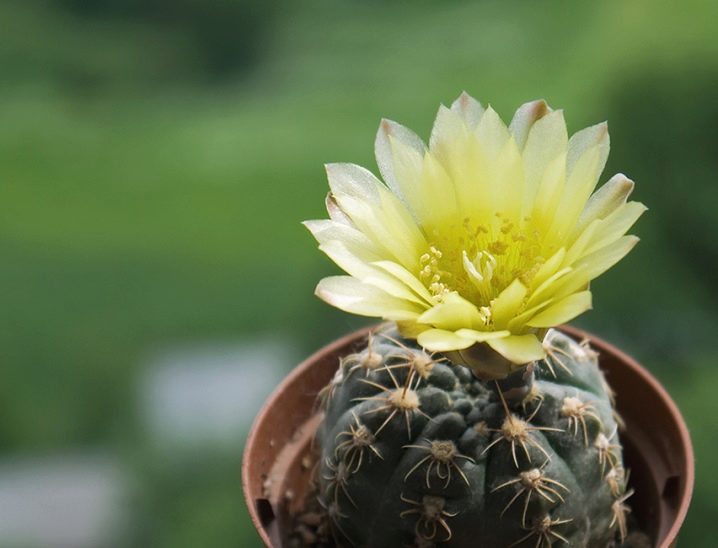
- Gymnocalium Quel has beautiful bluish undertones and shades. Dimensions - about 10 centimeters. White flowers have a red border.
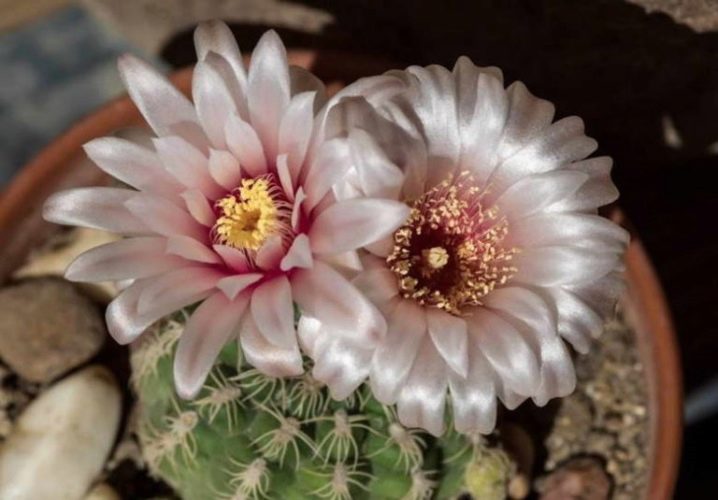
- Gymnocalium mix - this is a set of various cacti. Flowers are usually no more than 4.5–5 cm across. They can be used to create colorful thematic combinations that grow in one container. Cacti with red and lilac heads look especially impressive.
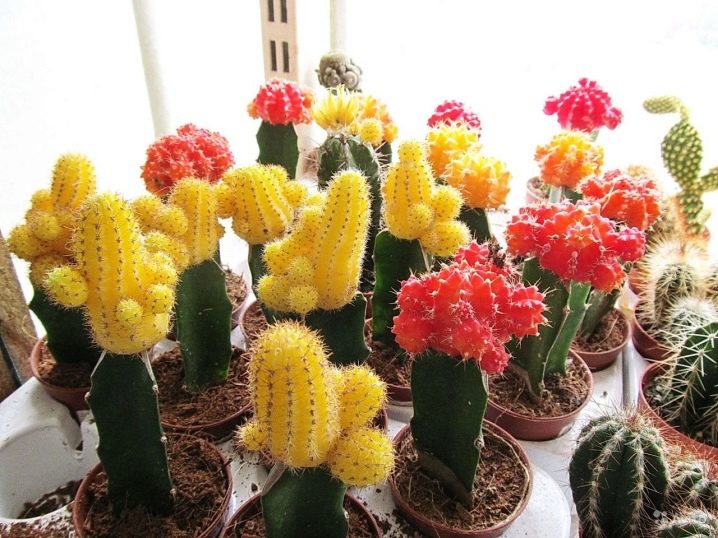
- Gymnocalycium reductum is a Japanese species. Its second name is Friedrich's cactus. This plant is unique. In the Land of the Rising Sun, breeders, crossing different species, have obtained a cactus that does not contain chlorophyll. As a result, cacti can be of the most original colors: dark yellow, bright orange and dark red. The spherical stem can be up to 100 mm thick, long spines (up to 4.5 cm) are shaped like eagle's claws. The flowers are beautiful, they contain all shades of lilac color scheme.

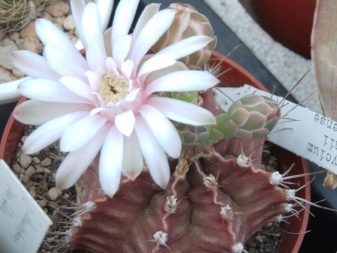
- Gymnocalycium baldianum - This is a special, unpretentious cactus in care, which is very popular all over the world. Its dimensions are from 4.5 to 10.5 cm. It tolerates drought well, therefore, it is possible to fertilize a cactus only during growth. Under natural conditions, it can grow even at altitudes up to 2500 meters. Argentine scientist Carl Spegazzini first described this plant in the scientific literature, calling it Baldi, after his friend Hasino Balda. The stem has a cross-section of up to 13.5 cm, the shape is spherical, has an original color, which can be light blue with a greenish undertones, even dark blue, almost black. The ribs can be from 8 to 10, they are separated by deep grooves. The spines, curving inward, are large, can reach 7.5 cm. Flowers, sprouting at the crown, can be up to 4 cm in diameter, look beautiful, have a maroon color. There are also specimens in which flowers are yellow, white and bright orange.
A distinctive quality of Bald is its rapid growth, flowering can begin after reaching a size of about 3 cm.
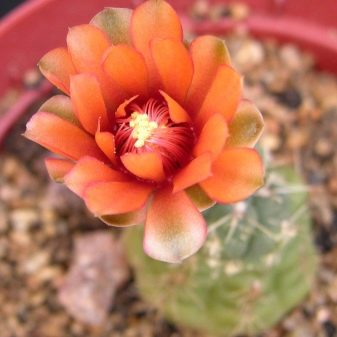
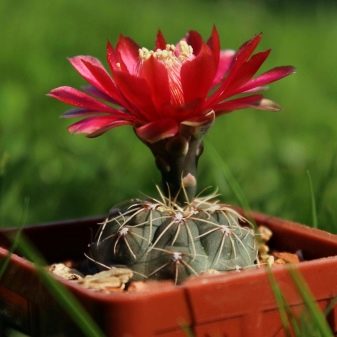
- The Brujah cactus is also popular. It differs in that it gives a huge number of shoots, there are many thorns. The plant is named after an Argentine naturalist. It reaches a height of only 6.5 cm, diameter - no more than 6 cm. The flowers are beautiful, have a pink color, in the center of the petals there is a dark stripe.
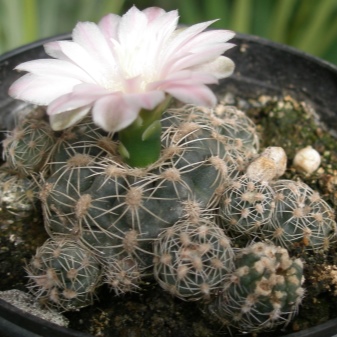
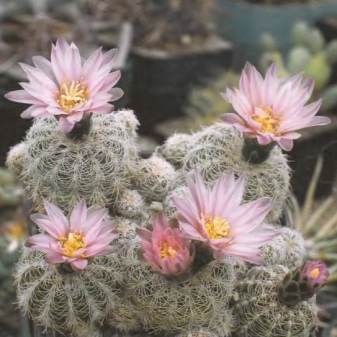
- Gymnokalycium Mikhanovich is very popular all over the world. This plant is easy to care for, it is recommended for breeding for novice gardeners. The cactus is a "launching pad", the basis for the cultivation of many original plant species of various colors. The spines reach a size of 10 mm, flowers can grow up to 8.5 cm long, have a diameter of 6.5 cm. They look aesthetically pleasing.
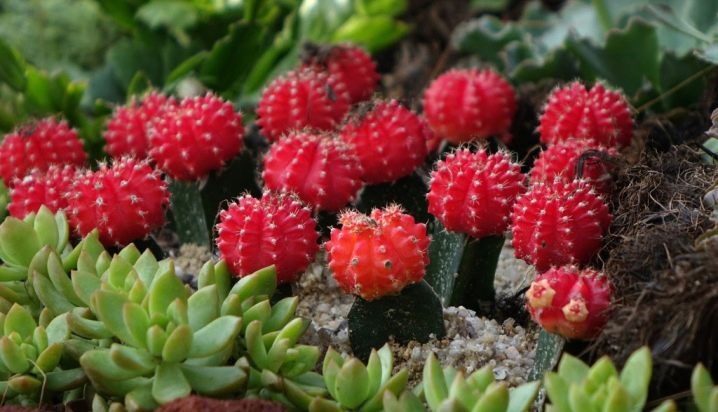
- Gymnocalycium multicolor has extraordinary flattened configurations. Its height is up to 10 cm. The cactus grows as a bush. The diameter of the stem is up to 12 cm. There can be 14 ribs. Flowers can be up to 5 cm in diameter and stick to short tubes.
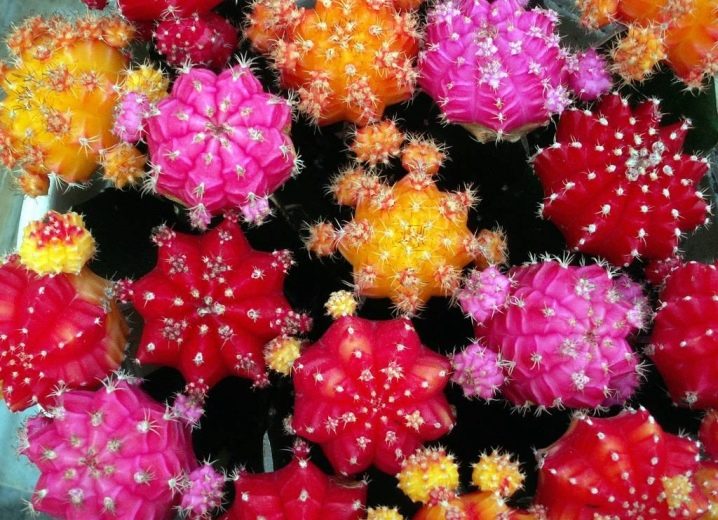
- Rubra cactus Is a beautiful plant that has a bright red stem. It looks especially aesthetically pleasing and original during flowering, which is rare. This type of cactus can be bred without much effort.

- Gymnocalycium Brazil has a stem of a flat configuration, reaches 6 cm in height, while the diameter can be 14 cm. Brasil has several raised ribs (7-9 pcs.) and long spines. Flowers come in beige shades.
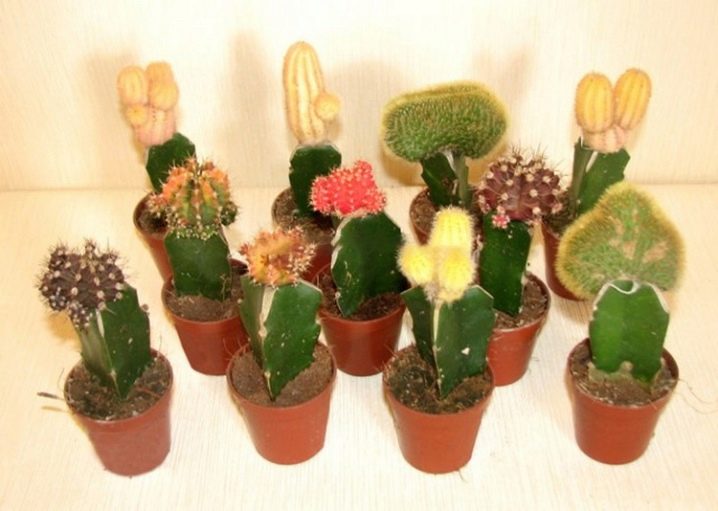
Care
It is not difficult to process the hymnocalycium. It is required first of all to adhere to the following points:
- intense lighting with lamps;
- high positive temperature;
- drained soil;
- small watering in spring or summer (no more than 1 time in 7-8 days);
- loose soil;
- feeding only with mineral compositions in the warm season.

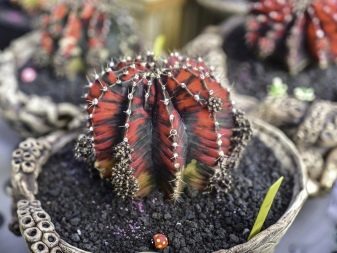
Grafting is necessary for plants that do not have chlorophyll. It is used for seedlings that are prone to rot, when it is required to grow a cactus in a short period of time.
Inoculation is done in the traditional way: a good-looking plant is selected, the instrument is disinfected, then cuts are made on the rootstock and scion. After that, they are bandaged. The fixation should not be excessively tight, the plant should be kept for 7 days.
A special graft exists in the Mikhanovich cactus, since it does not have chlorophyll. It lacks full-fledged photosynthesis, the plant can live exclusively in a grafted state. Grafting of Mikhanovich's cactus is done on another cactus that contains chlorophyll. To properly vaccinate, you must first find a healthy plant and prepare the appropriate tools.
Gymnocalycium needs an influx of fresh air, the room should be ventilated often, especially in hot weather. During transplantation, the roots are thoroughly cleaned, after which it is worth rinsing, drying, then installing the cactus in a new pot. It is recommended to cover the stem so that it does not come into contact with the ground. The topsoil is covered with fine gravel.
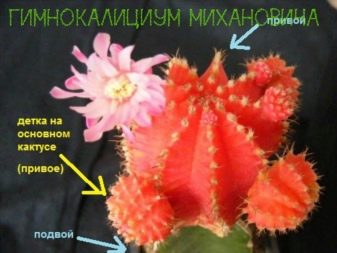

Watering
Watering is realized as moisture “leaves” the soil. The water must be defended before watering; it should be slightly warmed up in a metal container. In the second half of summer, watering is gradually reduced. In some regions, there is an increased percentage of iron in the water; it should be passed through a filter before watering.

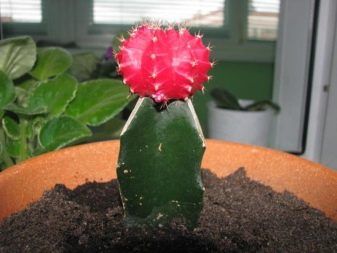
Humidity
Cacti develop actively in an atmosphere with high moisture. From March to October, they can be watered with small portions of water. In the colder months, plants need particularly intense lighting, and watering stops altogether.
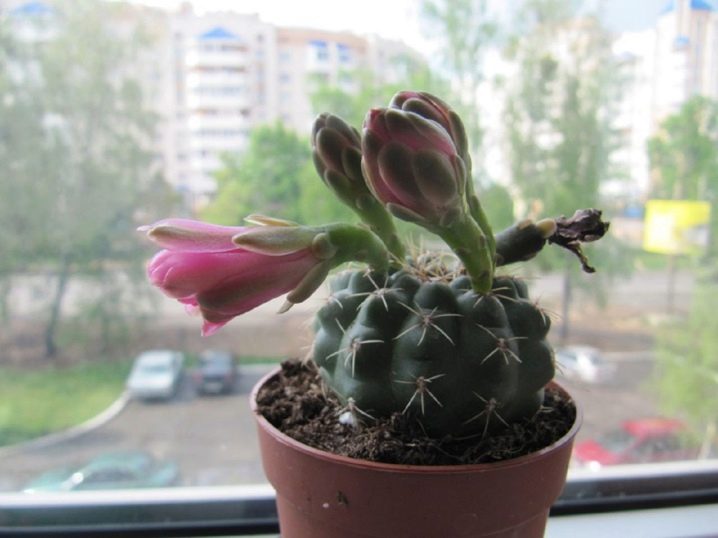
Temperature
In the warm season, the average temperature for a cactus is required up to +24 degrees, in cold months it can range from +14 to +19 degrees Celsius. Cacti can tolerate temperatures even slightly above zero (from + 5 ° C), but they fully develop within the above-mentioned limits.
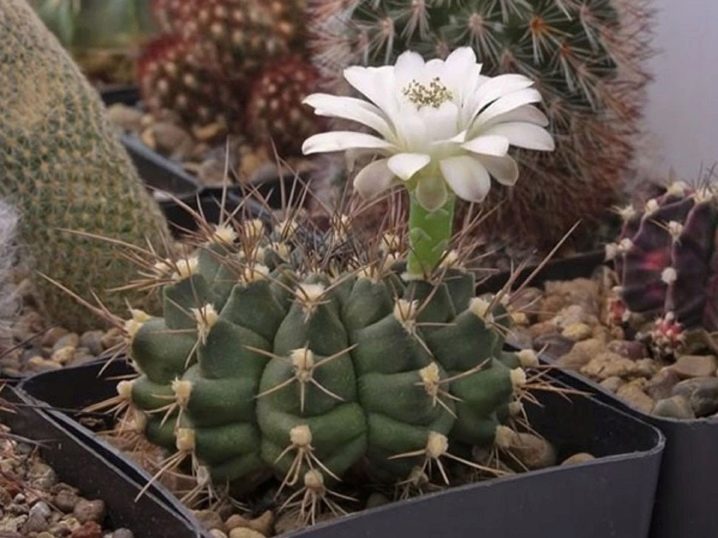
Lighting
These plants require abundant lighting. At home, it is recommended to put additional light sources. It must be remembered that direct sunlight can damage the plant's epidermis, so they should be avoided.
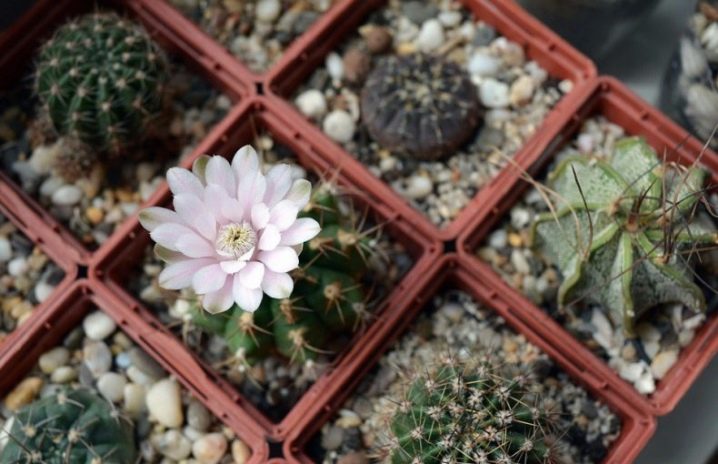
Fertilizers and feeding
For additional nutrition, special chemical compositions are used. They are easy to purchase on the appropriate trading platform. It is recommended to process cacti with mineral dressings, since organic compounds are categorically contraindicated for them. A small dose of fertilizer is applied once a month (from March to October). A cactus is an unpretentious plant, a similar quantity is enough for it.
In winter, watering, making any dressing is prohibited. At this time, the plant is gaining strength for vigorous activity in the summer and spring. You can not feed cacti with nitrogen-containing compounds, they may die.
And you should also carefully feed with complex chemical compounds, because too much feeding can harm the hymnocalycium.
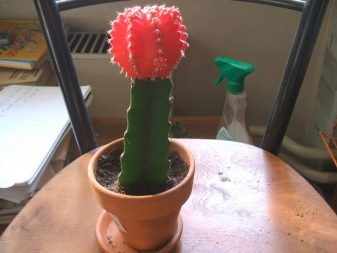
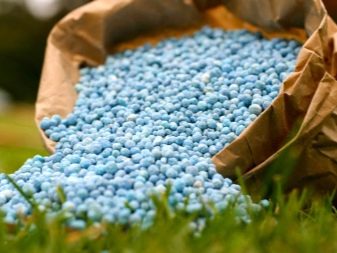
Transfer
It is recommended to transplant cacti in March, while the new pot should be no less than the previous one in terms of parameters. Plants can grow in any soil, but it is better to use slightly acidic ones. It is important that they are breathable and well drained. The soil can be prepared with your own hands, it is not difficult. You will need to prepare the following components:
- seeded sand;
- peat;
- expanded clay;
- ash from firewood.
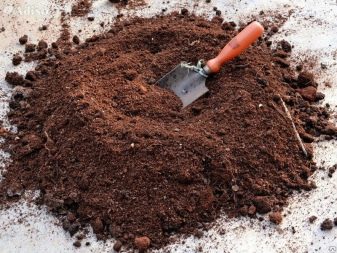

All components must be present in equal proportions. It is important that there is no lime in the soil. Young plants can be transplanted once every 12 months. Adult cacti are normally transplanted once every 24–36 months. The technology looks like this:
- the root system of the plant is thoroughly cleaned;
- dry it within 48 hours;
- the soil is prepared and also dried (lime is completely excluded).
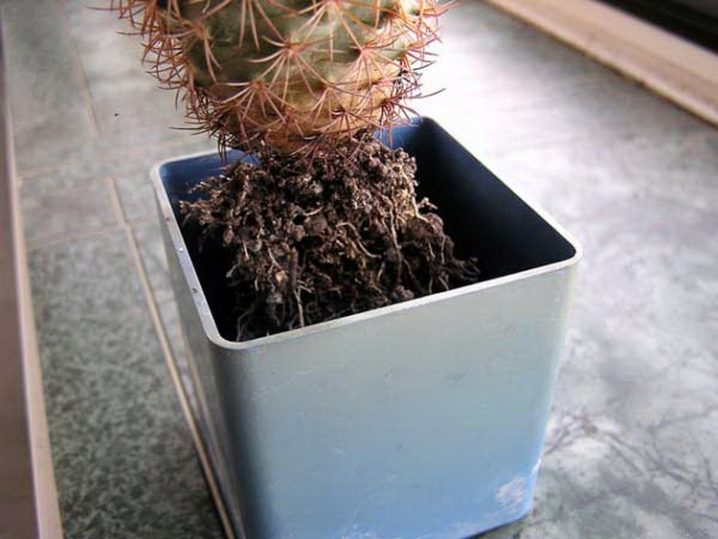
The cactus is resistant to the attack of various pests, but the following risks are present:
- do not water with cold or unfiltered water, especially if it has increased hardness;
- the soil should not contain alkaline compounds;
- stem damage must not be allowed.

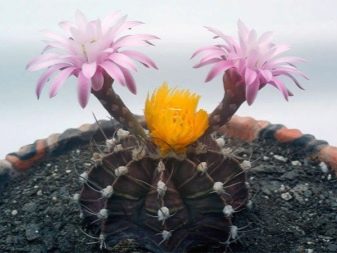
Reproduction
The cactus can be propagated using seeds. Reproduction is also practiced by layering, but the first method allows you to grow more resistant and hardy plants. A substrate with a fine structure is used. It is recommended to be sure to disinfect it, for this it is placed in the oven and heated for a while. After that, the cactus is planted in a small vessel. The best temperature for development is no more than +20 degrees.
You can plant seeds at any time of the year, as long as the right conditions for growth are maintained. After 12 months, the seedlings grow, they are placed in a large container.

Reproduction by lateral branches is also used. Technologically, this method is not difficult. The main thing is to "dismantle" the layers from the main stem, then you should dry them a little and only then install them into the ground. It is not difficult to detach the lateral process, it does not have a root system. Germination of cuttings, its rooting in good soil occurs in a short time. Sometimes the layers have a root system, in which case the plant is carefully dug out of the ground and transplanted into another container.
Plants that germinate from seeds are more resistant and hardy. At the beginning of planting, a shallow container should be prepared, in which there will be soil with fine fractions. Be sure to disinfect the mixture before starting work by calcining in the oven. The seeds are scattered neatly over the surface of the soil, which should have a medium degree of moisture. Then they are slightly covered with soil. All work is recommended to be done at temperatures below + 18– + 22 degrees. If everything happened according to the rules, then the seedlings will germinate in a week and a half. It is permissible to perform such operations all year round in compliance with the appropriate regime. After 12 months, the cactus is planted in a separate container.
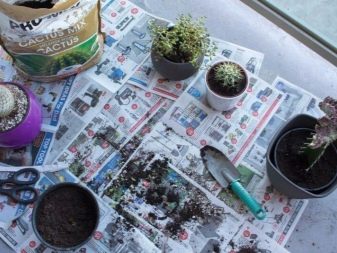
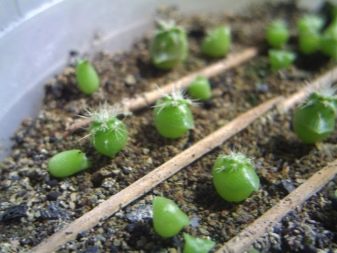
There is also a vegetative propagation method. Usually, plants start up side shoots in large numbers during the period of rapid development (they are called "babies"). The shoot is cut off, placed in another container. A reliable support is made for the cutting. After a short time, the plant will already take root. It is recommended to use another light source from November to February.
Sometimes the cactus also “lets out” the lateral processes, in this case they are transplanted neatly. Under such circumstances, the "baby" can be installed in the ground almost immediately.
For information on how the reproduction of the hymnocalycium occurs by children, see the next video.
Diseases and pests
The flat red mite is dangerous for hymnocalycium, as it sometimes eats cacti when there is no more suitable food. The ticks are so small that they can only be seen with a powerful magnifying glass. But the traces of their activity are clearly visible - long rusty stains remain. Gymnocalycium can only get sick at a young age, when the resistant qualities have not fully manifested themselves. The stems are washed with warm water, then treated with alcohol.
For domestic plants, chemical compositions should be used if absolutely necessary.
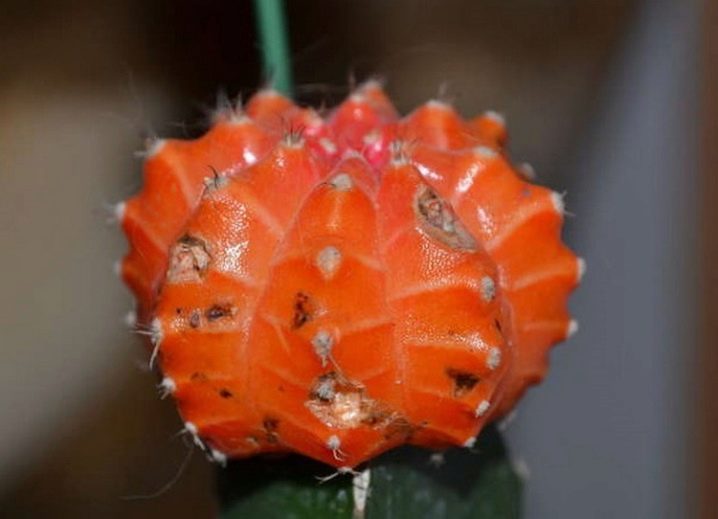
Sometimes a mealybug annoys cacti - this is a microscopic worm. It mainly affects the stems, in a short period of time it can suck out all the juices, and the cactus can die. You can see these creatures at the edges of the leaves, they are pinkish in color, and around them there is a white layer of cobweb. When a mealybug appears, plant growth stops, flowering also disappears. The mealybug "loves" all types of cacti indiscriminately, the roots and stems are affected. To disinfect the plant, you should rinse it, then spray it, wipe it with insecticidal compounds.
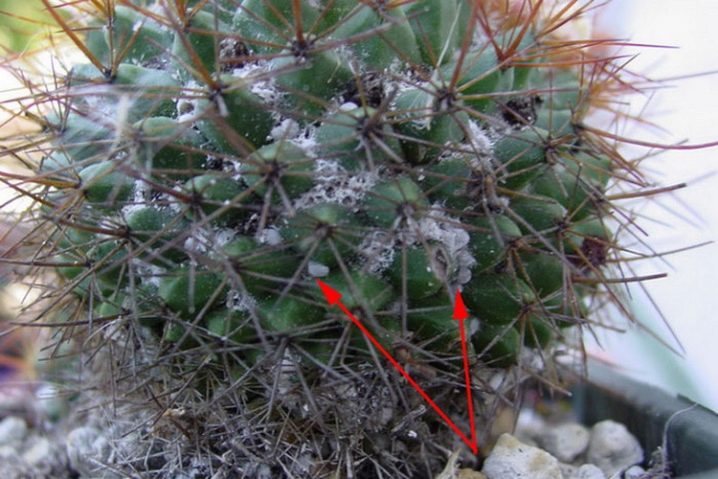
The most common ailment is root rot. The disease is dangerous because it spreads quickly in soil with a high moisture content.The treatment of the plant is as follows: the affected areas of the root system are cut off, washed with warm water, and dried. Disinfection is done using crushed activated carbon. Then the cactus should be transplanted into another container.
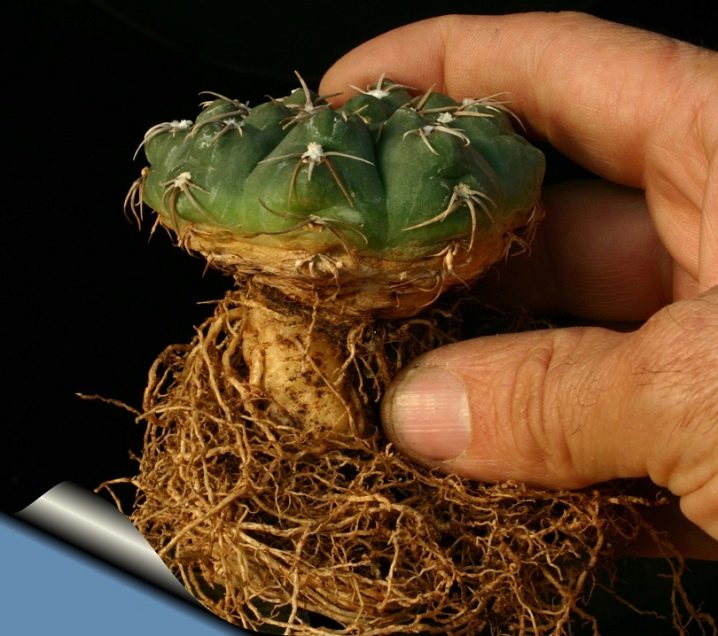























































Thanks to! Very detailed care instructions. And the views are well presented. I finally found mine ...)
The comment was sent successfully.